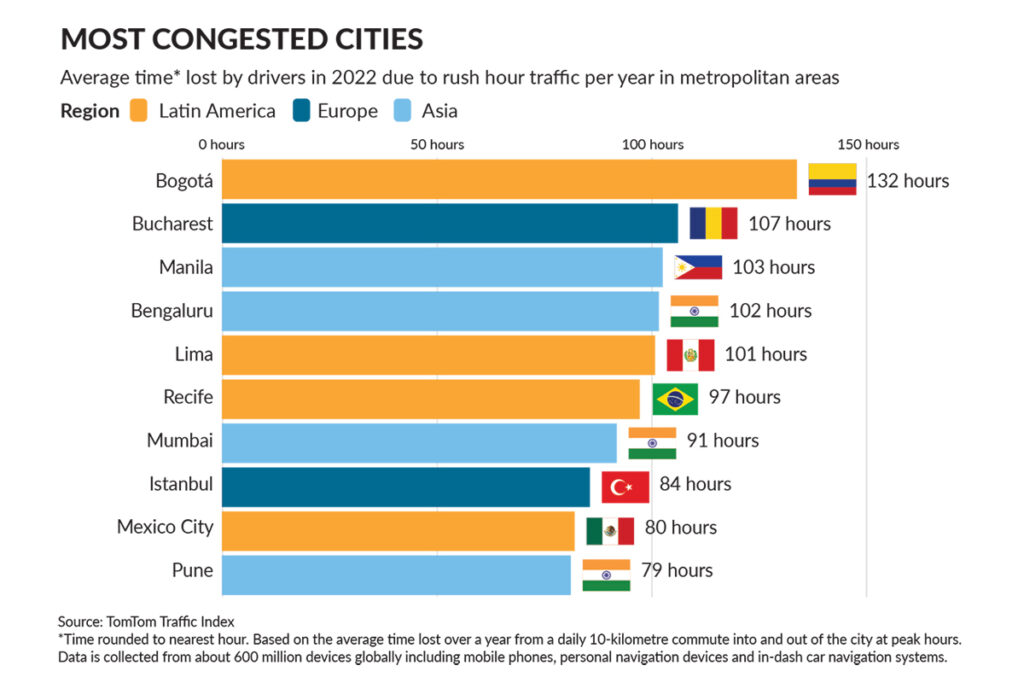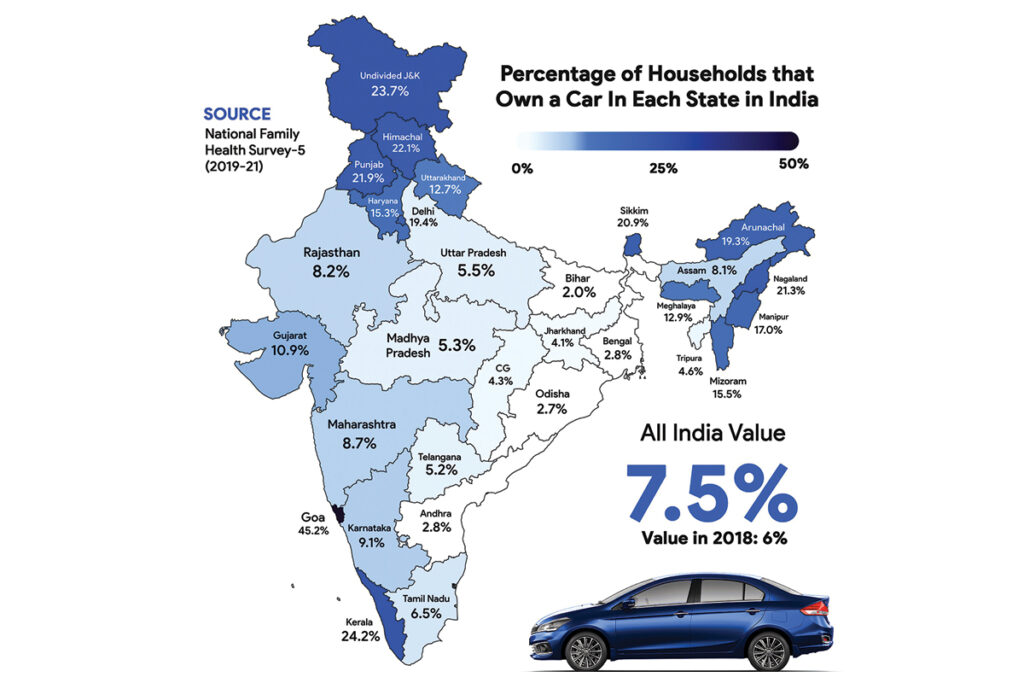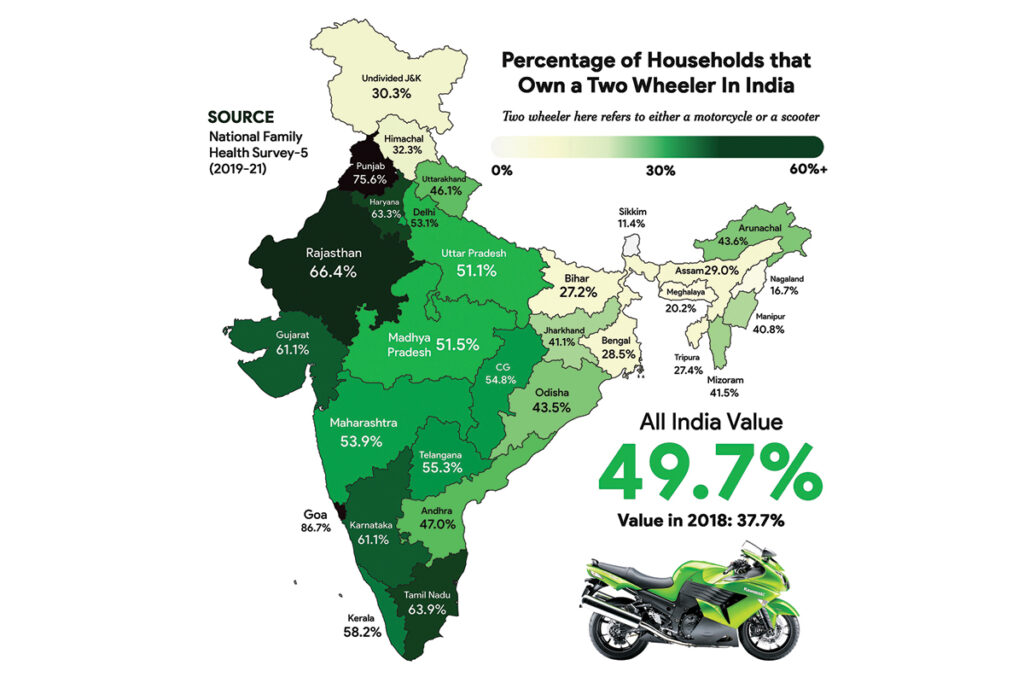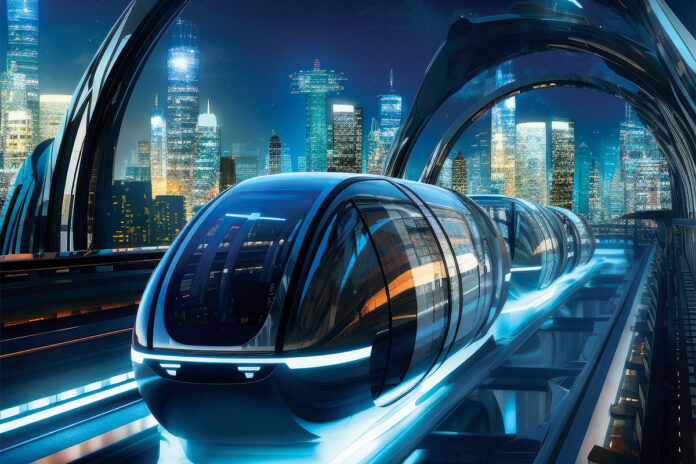With innovation firmly in the driver’s seat, we ponder the transformative forces at play, and how it will shape the forward movement of humankind
Words by Karan Karayi
To move forward is the ceaseless mantra of humankind, and it has been so since time immemorial. Today, perhaps more than at any other point in the history of humankind, we are witnessing a slew of innovations reshaping the future of mobility as we know it, or never have. Across startups and traditional OEMs, some of the sharpest minds are looking to push the boundaries of possibilities.
However, as Indians everywhere would loudly attest, having a 1.4 billion strong population (and counting) comes with its own unique set of challenges, chief among which are congested cities. With approx. 1.45 billion cars to be found across the world, one might imagine India’s per capita car penetration would be strong, but you’d be wrong. India’s car penetration is less than 35 per thousand in 2023, which is less than half the average for emerging markets. By comparison, there are 868 vehicles per 1,000 capita in the United States, 635 in Norway, 391 in Mexico, and 219 in China.
However, according to TomTom Traffic Index data on the time wasted in rush hour traffic in 390 major urban areas worldwide, India has two cities in the top 10 most congested cities in the world, as measured by time wasted in rush hour traffic (slow clap for Bengaluru and Mumbai). Ralf-Peter Schäfer, Vice President of traffic at TomTom, explains that the fundamental problem is that “too many people want to drive at the same time in the road network”. With a growing numbers of cars on the road and a lack of public transport infrastructure, “If you don’t make a massive investment in transit [systems], then the consequences are higher congestion,” he adds.

While a conscious effort is being made to move away from the legacy of privately owned vehicles towards public transportation or shared mobility options, it is not one that will be swift. This can be seen in the enduring popularity of four and two-wheelers of all stripes owned across India.


Trends to keep an eye on
Change can often be a funny thing. Sometimes, it can be upon us in a flash, becoming commonplace before we know it. At other times, it takes years to take root, and before we realise it, the world as we know it is altered.
The events of the last few years encapsulate both of these characteristics of change amply. The pandemic made us realise just how problematic commuting (especially in urban areas) detracted from the overall quality of life, with many being open to the idea of greater flexibility and peace of mind in the manner in which they get around.
The rise of micromobility
Unless you’ve been living under a rock, you’ve no doubt noticed the surge of two-wheelers dotting the Indian landscape. Expect this to grow unabated; according to a report by CRISIL, two-wheeler sales are expected to grow more rapidly than all other automobile categories between 2023 and 2028, at a CAGR of 9% to 11%, ultimately reaching a total of 25.9 million to 26.1 million units during this period. By FY32, sales are expected to nearly double to 30.7-30.9 million units from 16.3 million units in FY23. Put it down to buoyant consumer sentiments and rising disposable incomes, as also a desire for more flexible and palatable mobility options.
Electric mobility on a charge
The biggest beneficiary of the small-is-big switch in mentality has been the EV two-wheeler space, which has come to life in the last few years. Studies by equity research firm Elara Capital showed that the average monthly registration rate for electric two-wheelers for the first half of 2023-24 stood at 66,600 units, a figure that represents an upward swing after the blip brought about by the government slashing subsidies on electric two-wheelers. In comparison, the average monthly registration rate for all of 2022-23 was slightly lower at 60,500 units.
“Electric two-wheeler volumes continue to see a steady improvement. We expect this contribution to inch up further in H2 this fiscal and in FY25 as companies launch models at a competitive price to offset the subsidy reduction impact, and by reducing the battery capacity and implementing cost reduction measures from suppliers to benefit from scale,” said Jay Kale, an analyst at Elara Capital.
Autonomous mobility, the new norm
With the advent of technologies such as Artificial Intelligence, Machine Learning, computer vision, and robotics, autonomous mobility is no longer in the realm of science fiction. We’ve already seen these technologies start to become mainstream, and it will continue to be so as our understanding of its application and expertise in the underlying technology grows. This will allow vehicles to reliably navigate even complex environments with great accuracy and minimal human intervention, thus ensuring convenience and comfort without compromising on safety.
Currently, most vehicles sold with autonomous capabilities in India and the globe come with Level 2 or Level 3 ADAS features. This means the vehicle can self-adjust speed, brake when necessary, and even switch lanes, but the “driver” must periodically have his or her hand on the steering wheel for rapid intervention if needed. In time, Level 4 (being able to operate without driver input in most situations) will be commonplace, with the aim being to create Level 5 (or fully autonomous) vehicles.
And it’s not just autonomous mobility; expect these advances to also impact consumer-oriented products and services, such as self-driving delivery services, drones, and ride-sharing apps with autonomous capabilities, as we can already see happening in the Western world.
The unstoppable march of technology
It’s not just AI either; a motley cocktail of digital technologies are making an intoxicating case for cars as computers on wheels. A mix of the ubiquity of 5G, advanced robotics and cobots, the cloud, and edge computing are reshaping the dynamics of the automotive industry. From powering pre-sales, to monitoring manufacturing quality, streamlining the purchase process, and more, technology is equipping industries with an array of functionalities to drive data-driven decision-making and deliver incredible value. Suddenly, the whole idea of vehicles as software on the move isn’t that far-fetched an idea.
Together, these changes are painting a picture of change that is rooted in being smart, sustainable, efficient, and forward-thinking. Straddling the new-age and the traditional, these opportunities across the mobility landscape offer the chance to dive headlong into a brave new world with great velocity, and it is one that must be focused on with great intent.


